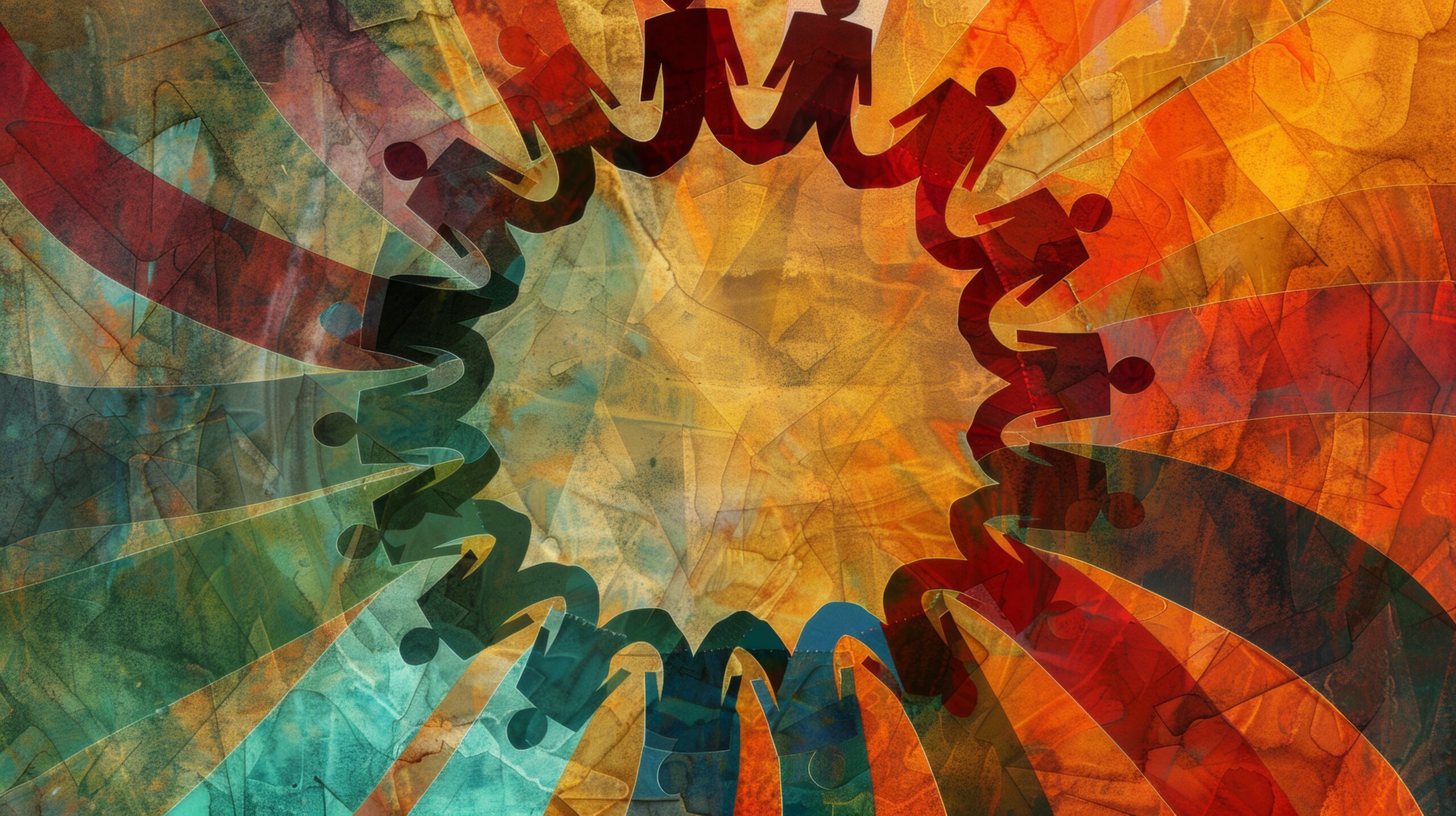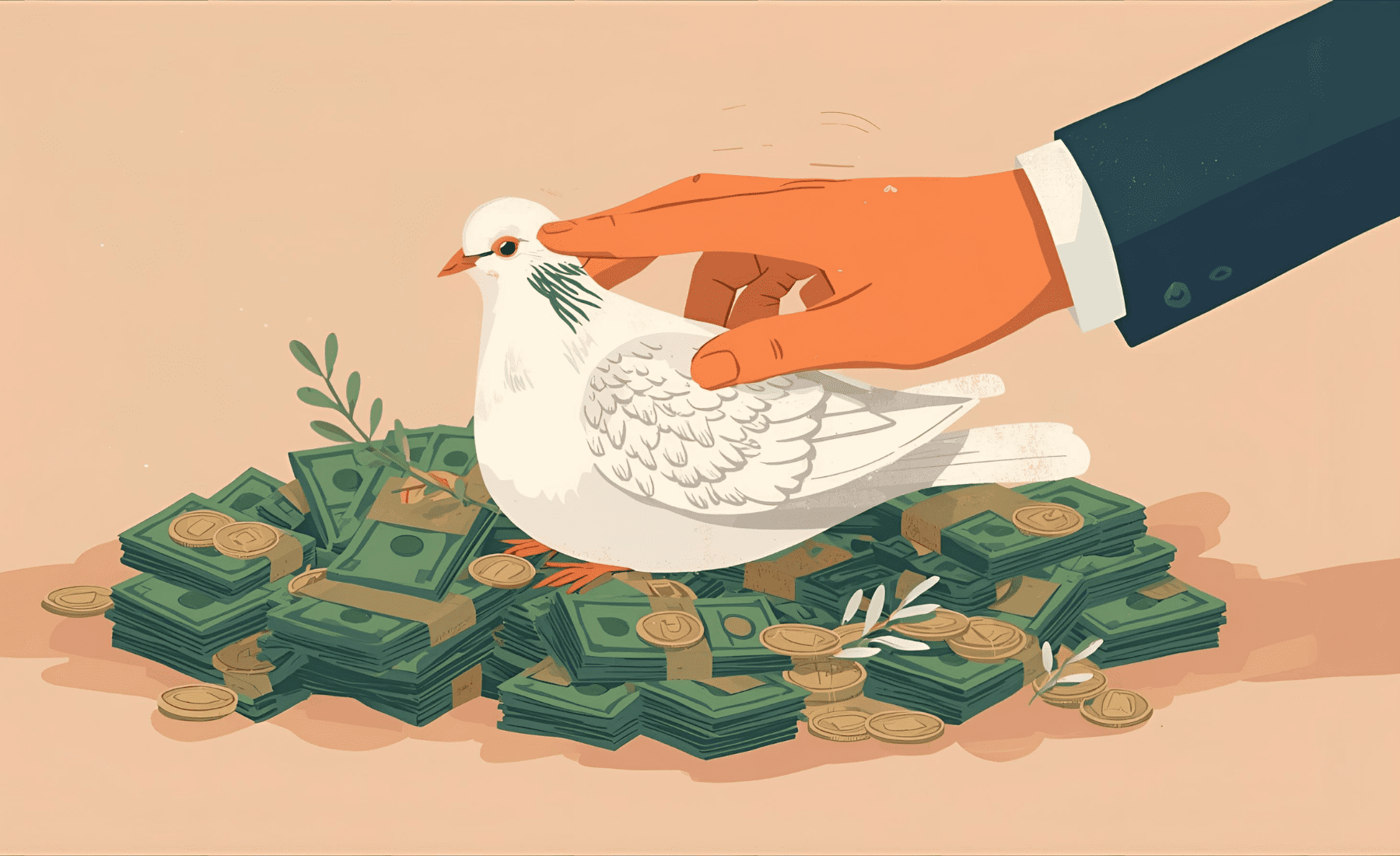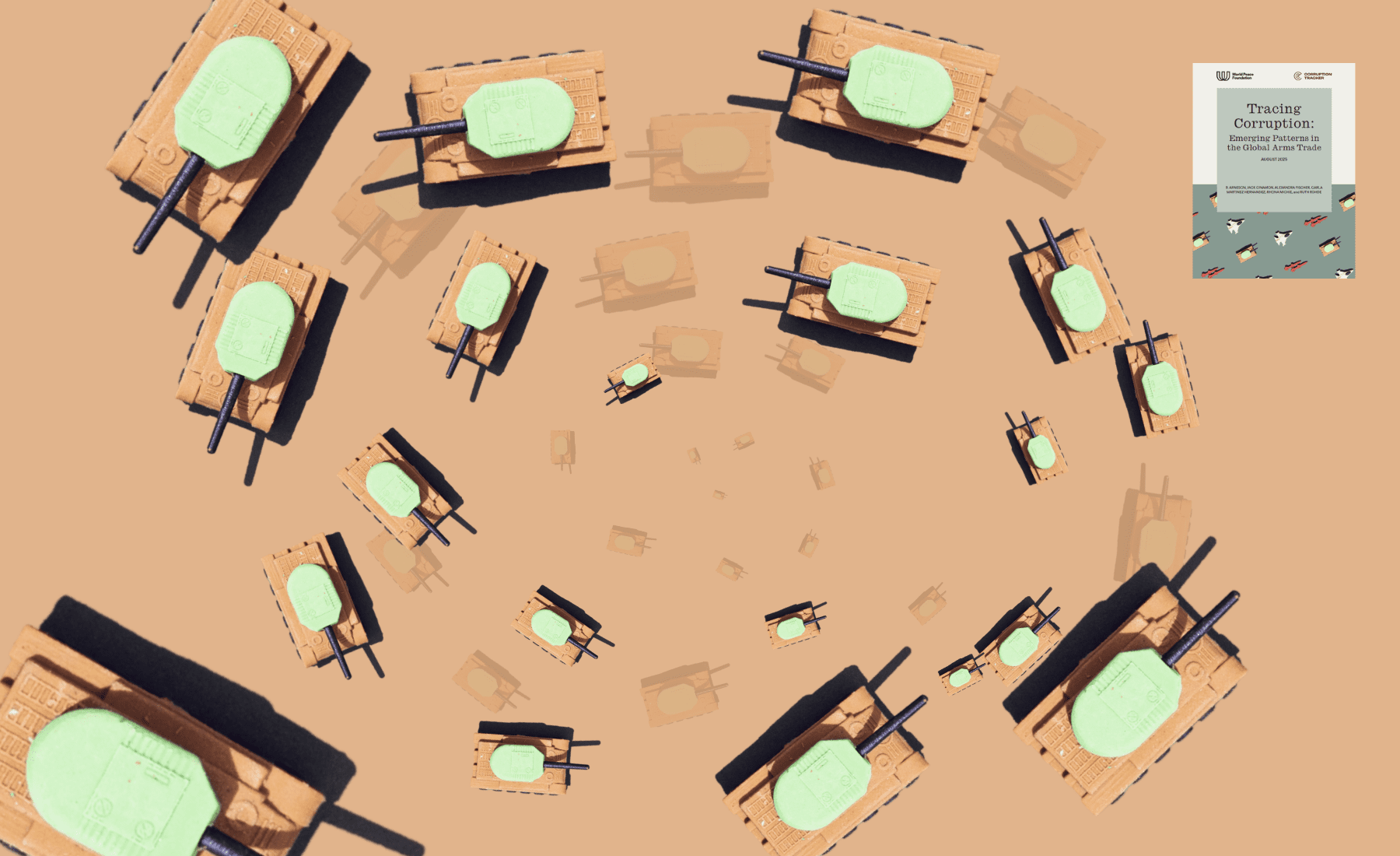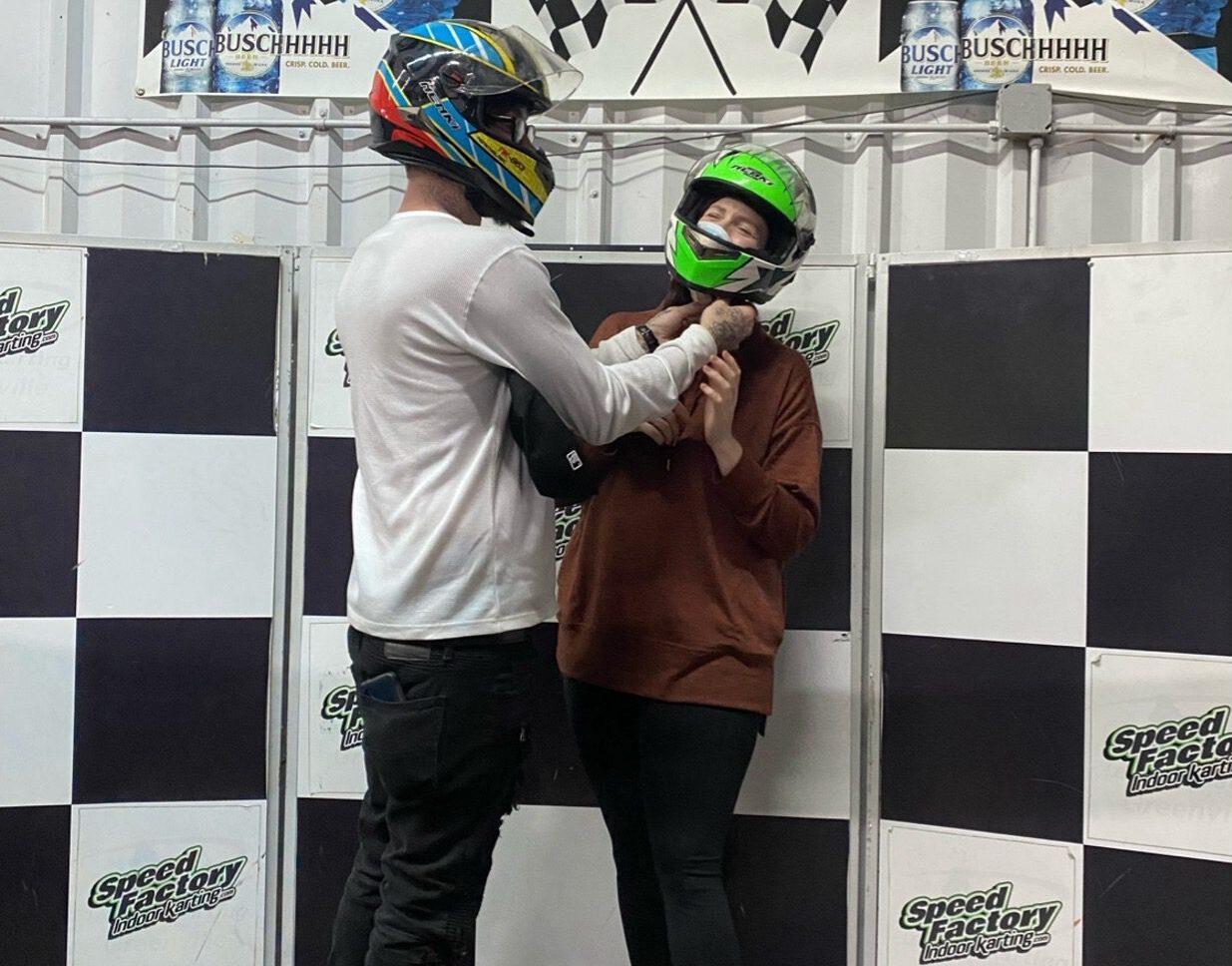This is Part One of our three-part series of excerpts from a discussion held on June 5, 2024 between Marc Gwamaka, a Rwandan peace educator, and Supreme Hassan, a Massachusetts-based restorative justice practitioner, about their work, which for both centers on providing spaces for people address their experiences of profound violence. The event was co-sponsored by the World Peace Foundation and the Generous Listening and Dialogue Center at the Tish College of Civic Life, both based at Tufts University. It was moderated by Bridget Conley of World Peace Foundation and hosted by Jonathan Tirrell of the Generous Listening and Dialogue Center.
Jonathan Tirrell
My name is Jonathan Tirrell. I am the director of the Generous Listening and Dialogue Center here at the Tish College of Civic life, at least since Monday I have been in that role. I am truly thrilled and deeply honored to be here entrusted with this role and, as well, for us to start off so strongly with today’s roundtable conversation. […]
So informed further by my work in the field of positive youth development, we understand that development unfolds in relationships, in mutually influential relations between individuals and their contexts. We describe all individuals as having strengths, and that all contexts have assets and resources, including, for instance, the other individuals that comprise those contexts.
And we also describe the possibility for change, even transformational change—what we term relative plasticity—as being possible by aligning those individual strengths and ecological assets in mutually beneficial ways. No one person is set on a developmental pathway or doomed by past circumstance. Transformational change and thriving are possible when our strengths and resources are aligned, serving and benefiting each other.
So, taken together, these truths and this work allows for an optimistic approach to showing up and engaging in our world. In times as divisive and as polarizing as these, we need that optimism. For instance, when political party affiliation is more based on shared hatred for the other side, instead of shared values and goals for society, which research over the past several years has shown. When we are so quick to dehumanize each other and to devolve into tribalism.
To spend time with another person, to be together in conversation and in community with others, is inherently moral. As psychiatrist and author Ian McGilchrist explains, “attention is a moral act.” It is a generous gift, and it humanizes each other—but perhaps only if given in the right way.
David Brooks, author and columnist, describes this further in terms of diminishers and illuminators. In conversations, diminishers tend to make others feel small or unseen. They might be those who listen for catch words or virtue signals or clues that enable us to categorize others into “us” and “them.” They may listen to wait for their turn to speak. The conversation is transactional, diminishing, even dehumanizing.
Illuminators, on the other hand, engage deeply and empathically, listening with curiosity and with generosity.
Quick plug here for the Generous Listening and Dialogue Center, which I am now directing, and deep thank you to the Vuslat foundation for their support and partnership.
Listening is about the human person, about the why behind the words, it shows dignity and respect, seeks first to understand rather than to be understood.
As developmental psychologist Erik Erikson might have said, whenever an adult interacts with a child, they are either helping or hindering that child’s development. I would say the same is true for all of us in our social interactions, we are either illuminating or diminishing, humanizing or dehumanizing one another.
Listening, then—generously giving our attention to others in ways that show dignity and kindness and respect, that recognize and appreciate those three truths in ways that celebrate our shared humanity, is a step toward realizing that optimistic approach to promoting human thriving and flourishing.
So, in that spirit, welcome to today’s roundtable conversation, Listening and Dialogue for Peace and Justice. Our conversation will be facilitated by Bridget Conley, Research Director for the World Peace Foundation here at the Fletcher School. And whereas my approach, as I just described, is much more interpersonal and focused on person-context relations, Bridget’s work might be described as a bit more political, focused on institutions and structures, how power is manipulated, for instance, toward mass atrocity. She will introduce our guests as well. Marc Gwamaka, here from Aegis Trust in Kigali, Rwanda, and the Kigali Genocide Memorial, and Supreme Hassan, cofounder of the Transformational Prison Project and of Responsible Party Consulting. […]
Today would not be possible, first, without the support, ideas, and brilliance of my research partner, Professor of Philosophy and Pulitzer Prize winner, and expert curator of cheese and fruit platters [laughs], Erin Kelly, who has worked with me since 2018 in our first project exploring forgiveness as a civic virtue in post-genocide Rwanda.
Bridget Conley
Jonathan, thank you. Thank you for grounding us, too. As someone who analyzes political systems, and thinks of myself as an activist as well, you’ll get sort of critical poking and prodding, in some of the impatience of an activist who wants to see things change. But I don’t see that as, in any way, at oddswith that ethical listening, especially when I’m sitting next to really consummate practitioners in restorative justice and peace education. You guys can kick me under the table if I get impatient or too hyper-critical
For short bios, Marc Gwamaka is the Engagement and Outreach Coordinator at Aegis Trust, which is an organization that works to prevent genocide and mass atrocities worldwide. He has previously founded the Aegis Youth Champion Leadership program, a transformational initiative that touched the lives of more than 2,300 individuals, including people who are in deeply entrenched and active conflicts, and empowered them to become influential advocates for humanity within their communities. This program is operated in South Sudan, Central African Republic, and Nigeria. He also has initiated the Peace and Love Proclaimer, a youth movement, dedicated paving pathways of humanity, and introduced the Walk to Remember, an educational program that disseminates messages to young minds globally. Its curriculum educates young people on the subject of genocide, its consequences and methods for preventing its recurrence.
We also have Supreme Hassan, who is the Founder and Principal of Responsible Party Consulting Group. He brings over three decades of expertise and fostering meaningful connections, building transformative organizations, and nurturing caring communities, particularly within marginalized populations, with a keen focus on understanding root causes of harmful behavior and the intersection of systemic oppression and interpersonal violence. Supreme, has dedicated 20 years of his life to these topics. In 2010 he designed and established the Restorative Justice Working group in Norfolk, Massachusetts, and co-founded the Transformational Prison Project in 2012. It’s a Boston-based nonprofit or organization centered on restorative justice principles. He also specializes in leading group processes for individuals impacted by the justice system, and collaborates deeply with victim and survivors of violent crimes. He’s currently pursuing a bachelor’s degree in Applied Liberal Arts from Boston College, and has been a participant in Tufts TUPIT program, whose director is with us this afternoon, and is expected to graduate in 2025.
So we thought we would start by having each of our guests give us a sense of the context. We’re talking about work that’s really—there are some strong bridges, and we’ll get to that, but they come from very distinct contexts, and their programs reflect that. So Marc, can I start with you and give us a sense of what your work has been and what it means to do it grounded in Rwanda, even though you’ve worked internationally.
Marc Gwamaka: [Discusses pre-colonial Rwanda, and periods of post-independence violence, leading up to the 1994 genocide of the country’s Tutsi minority]
[…] our peace education starts from that context where you’ve had people who massively joined atrocities, and they committed atrocities. But as a matter of fact, it happens that everyone is affected with the same atrocities. If it’s not a mom who killed her children, it’s a father who killed the wife. It’s a neighbor who killed their neighbor; it’s classmates who killed the classmates; it’s a teacher who killed the students. It’s just a mess.
Our peace education starts from there, where we use the peace—the storytelling approach. But also not going in details of “who killed who,” but going to find our values that were lost during the time when the atrocities happen. Some of these values that we deal with are empathy, critical thinking, and personal responsibility.
The main aim of what we teach is, how do we teach young people to question what is going on? To even start thinking, “why do I think the way I think?” And “what causes me to think the way I think?” Also to go into details of, “if someone is saying this, why are they saying that?” And “what do they want to achieve?” The reason for that is, we don’t want to have a community or a nation where young people can just go with the bandwagon. We want them to be critical thinkers, to understand what’s going on, but also to go into details of, “all right, now that I’ve understood this, what are my actions?” Those actions should be informed by empathy, where they know that whatever they do to the other, what if it was done the other way around? They put themselves in the foot of the other. […]
Supreme Hassan
Well, first and foremost, I like to lead by saying I am guilty of the murder of another human being. And as such, when the neuroplasticity in my mind began to undo those tapes and tap into who I am as a human being, as a responsible party, that is when I stood up, literally in an 8’ by 6’ cell, and realized that I was responsible to repair the harm, sans system for now, but personally and interpersonally, within my family, my community, and, eventually, society. So, starting at the first aspect of the scale—myself—I had to acknowledge the harm that I caused. I had to sit with that acknowledgement. And it wasn’t always easy.
No human being is born—in my judgment, no human being is born a monster, no human being is born a gangster, a killer, a drug dealer, none of those things. I had to reconcile with who I became and who I was. And it was while being incarcerated, five years locked up 23 hours a day, that this reality became crashing on me. In the sanctity of the most unsafe place, segregation, a light began to extinguish between the darkness that was me at that point. Realizing that I needed to apologize to a litany of people. This is what it needs to be our responsible party, this is what it means to accept this responsibility for the harm you’ve caused, and work as much as possible, as much as practical where you’re at, to repair that harm.
I went back as early as grade school, and that is really where the work began. Though that list went back to grade school, I had to begin at the community where I was at, that was incarceration. So unbeknownst to me, I started an unconscious process of micro-reparations, replicating what I was going through within myself, through one-on-one relationships with my peers and my colleagues in every prison I went to. And while still in segregation in 1995, I realized that I had to do everything within my power to stop violence within my community.
Once I was released into the general population, I began to get involved with self-improvement groups. There is no rehabilitative process in Massachusetts prison. Again, I will repeat that, there is no rehabilitation in Massachusetts prison. The taxpayers’ money that goes towards that — you need to ask for a return on your taxes, because it doesn’t exist.
I started tapping into a habilitation process. And when they saw that the transformative process that I was undergoing within myself, how my peer group would begin to look at me and ask me questions: “Supreme, how did you get here? How are you doing this?” I didn’t have the answers for them, because I was living deep in the process. So I was just—teach each one, according to their ability.
As years went by, I began to develop programming with s core group of individuals. Then, in 2010, while at Massachusetts’ largest prison, MCI Norfolk, there was a gang riot that happened in the west—in the alleyway leading to the Westfield Yard. And I personally felt responsible for that, because now I’m much older. Now I have tapped into my influence as a repairer of harm; I have tapped into my influence as a mentor; I have tapped into my influence as a bridge builder. On both sides of that riot were young men, that I enjoyed relationships with, young men that would often only confide in me about what they were going through. They didn’t know I was quietly working to create space so they can have a safe container.
I felt guilty. I felt ashamed. I felt responsible, because I hadn’t created that space at that time. There are mitigating factors as to why I hadn’t. The same way systemic racism runs rampant in our society and controls our systems; it’s the same way that systemic racism and deliberate indifference was pervasive in a place called ‘Corrections.’
So once that riot took place, I said, “You know what? I’m not looking for the traditional. I’m going to go the non-traditional route.” I single-handedly, one person, conducted a survey of all the impact players in that prison. That included the Italian gangsters, the Irish mob, the Latino gangs, the national gang, street-level gangs, and impact players from the city of Boston and throughout the Commonwealth.
I knew that they would support anything that I would do, because of how I’d been showing up for decades up until that point. But I said, “No, I don’t want you to support me, I need you to support yourself. This is our community. It’s either gonna be all of us or none of us.” And they said, “Supreme, whatever you want to do, I am with it.”
What happened next is very little-known history. I then sought an audience with the Correction Officers Union. I asked to speak to a head of the Union because I also understood that they shared community with us as well. And the best way to “other” someone is not to communicate with them.
So, having that communication with Lieutenant Haynes, who was a Union steward at the time, he said, “Before you say anything, I know who you are, I know all the heavies. If something happens to one of my officers, they’ll put you on a transport, but we will find you, and we will touch you.”
I appreciated his honesty. His honesty was representative of the core principles of restorative justice: trust, humility, respect, and care. He cared about his fellow brothers and sisters in uniform. I cared about my fellow residents in that prison community.
He heard the proposal. The proposal was entitled, “Building community through restorative justice: A public safety initiative for the residents at MCI Norfolk.” But the residents just weren’t us. I spoke to every chaplain, every rec officer, the inner perimeter security, the schoolteacher, the first officers. And everyone understood that that camp was at a tipping point of camp. Why? Frustration, they could implode at any moment. Violence had consumed perhaps one of America’s safest prisons. Now the correctional officers were listening because it hit their front door.
Once the initiative was pre-lit, we began a process of developing programs. Our principal flagship program was called Restorative Justice Day of Responsibility. I’ll talk a little bit more about that later.
And in that Day of Responsibility, which was a multi-day conference, we had the opportunity to interface and engage with actors from every strata in our Commonwealth, including then Governor Deval Patrick, then Superintendent-in-Chief William Gross of the Boston Police Department, and countless academic leaders throughout the Commonwealth of Massachusetts.
We simply sat in circle. We simply listened to each other. We simply began to tap into the agency of our own humanity, and see that there was more that connected us through this general listening than separated us. And then the work started. Then the work started.
So I’ll stop there. I’ll say that I’m humbled to be a part of this discussion. I’m living out a dream. The tagline of my organization has always been transforming the globe. One individual, one relationship, one circle, one courtroom, one corporation, one continent at a time. And it starts with this ground-level engagement. Thank you.
Bridget Conley
Thank you. Also, I want to pause for just a minute. And ask you say you were in segregation, which is solitary isolation. How long were you in?
Supreme Hassan
Five years.
Bridget Conley
Yeah. So just—I said that that was part of the context. And also to acknowledge—we can study the 1994 genocide against the Tutsi in Rwanda is if it’s something that can be summed up in, like, a handful of words—but to acknowledge within both of your stories the really profound violence. That is the bedrock in the context in which both of you work. Violence right?—that was, that you were a part of perpetrating, but also that was perpetrated against you, and also the violence of a system that continues, and doesn’t rehabilitate, but actually becomes a fulcrum of more violence.
This is the first installation of our three-part series of excerpts from Listening and Dialogue for Peace and Justice: A Roundtable Conversation, held on June 5, 2024. Additional excerpts can be found in Parts Two and Three, which will follow over the next two weeks.



